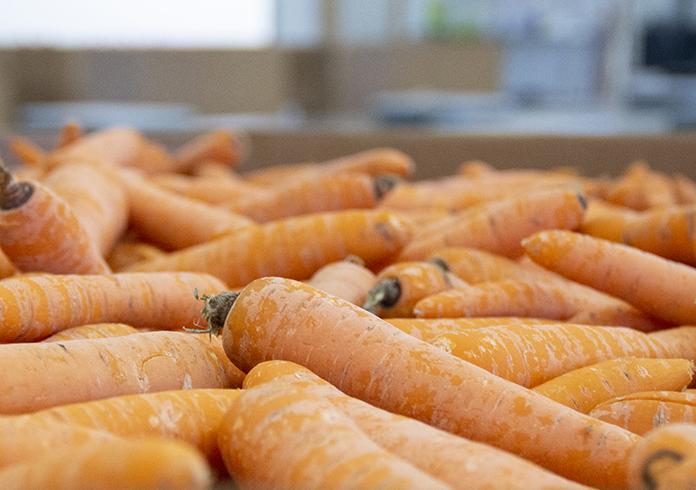
Farm to Food Shelf
By offsetting a portion of harvesting, packaging and transportation costs, this state government program makes it easy for Minnesota growers to donate surplus crops that would otherwise go unharvested or be discarded.
Farm to Food Shelf is a state-funded program that offers local farmers the opportunity to donate excess produce to area food shelves.
Donation of excess produce
Last year, we sourced 10.4 million pounds of produce from local Minnesota farmers and processors, which represents about 23 percent of the total amount of the fresh produce we source from farmer- and commercially grown partners. But it’s not just about produce! Farm to Food Shelf funds enabled Minnesota food banks to source 7.4 million pounds of dairy, including 822,000 gallons of milk, and over 3.1 million pounds of meat from local producers, processors, and donors last year.
Reduction in waste
At least 31 percent of our food supply goes uneaten according to the U.S. Department of Agriculture, and discarded food makes up the single largest source of material in our landfills according to the Environmental Protection Agency. When consumers eat with their eyes, purchasing the best-looking produce, that means farmers don’t have a market to sell their perfectly edible but slightly different-looking fruits and veggies.
Farm to Food Shelf is not only cost effective and easy for farmers (thanks in part to the transportation and logistical support provided by Second Harvest Heartland) but it saves millions of pounds of food from going unharvested or wasted.
Increase in high-demand items
For years, the hunger relief network has hustled to bring more fresh, nutritious products to those facing hunger, not only shelf-stable items like peanut butter and pasta and canned vegetables. Unfortunately, in-demand items like dairy, protein and meat are also the most expensive at grocery stories. As tens of thousands more Minnesotans face hunger, many for the first time, having these familiar items available is important on every level.
Support of local farmers
Thirty Minnesota farmers participated in our Farm to Food Shelf program last year, from Hollandale to Trail, Atwater to Andover, and spots in between. Farmers like the Van Erkels:
“If I didn’t participate in the program, I’d have to dispose of the onions and potatoes myself, which would be labor-intensive, time-consuming and costly,” admits Van Erkel. “Farm to Food Shelf makes my life easier and it feels good to give back.”
Programs like Farm to Food Shelf around the country are credited with both responding quickly and effectively to COVID while also rescuing small-scale farming.
What the pandemic taught us about our partners in agriculture
Farm to Food Shelf demonstrated the cost-effective, mutually beneficial role government can play to support both farmers and communities, especially in times of crisis. That’s why Farm to Food Shelf funding is regularly one of our priorities during Minnesota's legislative sessions.
Interested in learning more?
Reach out to Heidi Coe, Produce Sourcing Specialist, by phone 651-282-0855 or email hcoe@2harvest.org to learn more about reimbursements for harvest, packaging for transfer, minimum donation amounts and more.
. .

